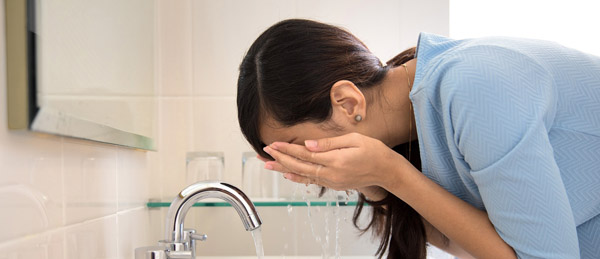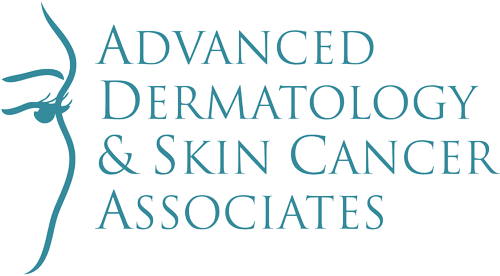
Live Strong posted “The 6 Best Stye Remedies, According to Dermatologists.” The article includes Visha Skincare founder, Dr. Purvisha Patel‘s expert insight on warm compresses to help open pores and drain eyelid blockages and petroleum-based antibiotic ointments to help soothe lingering inflammation.
You might not know this, but our eyelids contain small oil glands. When those glands get clogged, it ups the risk for a minor infection known as a stye.
“The medical term for stye is hordeolum,” Kemunto Mokaya, MD, a board-certified dermatologist in Houston, tells LIVESTRONG.com. “A stye develops when the oil-producing gland in the eyelid margin gets blocked, inflamed and infected. It is usually caused by a bacterial infection (usually the type called staphylococcus) and can affect the internal or external glands of the eyelid.”
While it’s nothing to be alarmed about, having a stye can be uncomfortable and may also make you feel a little self-conscious about going out.
“A stye appears as a painful, red bump on the edge of the eyelid,” Dr. Mokaya says. “It may have pus and cause crusting along the eyelid. It may be associated with itching, tearing of the eye, a feeling like there’s something in your eye and light sensitivity.”
A stye usually goes away on its own after one or two weeks. But there are a few simple home remedies for a stye that can minimize the symptoms and help speed along the healing process. Here are some expert-backed remedies for styes.
1. Apply a Warm Compress
“Warm compresses dilate the blood vessels around the area and can help open the pores around the eyes, which can help the stye come to a head and drain,” Purvisha Patel, MD, a dermatologist at Advanced Dermatology and Skin Cancer Associates in Memphis, Tennessee, tells LIVESTRONG.com.
Here’s how to do it: Dampen a clean washcloth with warm water and then gently place it over your eye for five to 10 minutes. Alternatively, Dr. Patel recommends using a “cooled boiled egg, as it’s the perfect size for this.” Just make sure the egg isn’t too hot before placing it on your eyelid.
2. Use a Warm Tea Bag
Warm tea bags may help for the same reasons as a warm compress, but green and black tea bags have the additional benefit of containing anti-inflammatory and anti-bacterial properties, Dr. Mokaya says.
She recommends steeping the teabag in warm water for at least a minute and then applying it to the stye for five to 10 minutes. Just make sure the teabag isn’t too hot, and don’t add sugar or any other additives to the tea while the bag is steeping.
3. Wash With Saline Liquid or Baby Shampoo
Try putting a little saline liquid or baby shampoo on a clean washcloth or dabbing the liquid with a cotton swab and gently using it to clean your eyelid.
“This promotes lid hygiene and helps to clear away the oils and other gunk around the eyelids,” Dr. Mokaya says. “Shampoo ingredients also break down bacterial membranes.”
Because the skin around your eyelids is thin and very sensitive, it’s best to use a product that’s hypoallergenic and non-irritating. Emily Wood, MD, a board-certified dermatologist at Westlake Dermatology in Austin, Texas, recommends using “baby shampoo or OCuSOFT pads,” as they are “safe ways to cleanse the eye and can also be helpful for improving drainage.”
4. Massage Your Eyelids
“Massaging the eyelid margin with clean hands can help with circulation and drainage, leading to faster resolution of the stye,” Dr. Mokaya says.
You can also massage the area using OCuSOFT pads (mentioned above) to help promote drainage while loosening the blocked duct.
5. Use Topical Antibiotics
A petroleum-based over-the-counter antibiotic ointment “can help soothe the inflammation and irritation the enlarging oil gland can cause on the lids,” Dr. Patel says. Ask your pharmacist to recommend a specific product.
Sometimes, a stye might warrant a prescription from your doctor.
“An antibiotic ointment is prescribed for milder cases, but if there is concern for a more severe infection, your physician may drain the lesion and prescribe an oral antibiotic,” Dr. Wood says.
6. Take Over-the-Counter Pain Relievers
Dr. Mokaya suggests taking common pain medication such as “acetaminophen and ibuprofen for the discomfort and inflammation associated with the stye.”
Follow the instructions on the package to make sure you’re getting the correct dosage.
What About Popping the Stye?
“It can be very tempting to pop a stye,” Dr. Wood says. “However, this should always be avoided, as it can cause injury to the eye and introduce new bacteria into the region.”
Dr. Mokaya agrees that squeezing or popping a style “might worsen the inflammation,” and if the device used isn’t sterile, you “might introduce a new (and possibly worse) bacteria to your eyelid.”
How Long Does a Stye Take to Go Away?
“A stye usually lasts one to two weeks and drains on its own spontaneously,” Dr. Mokaya says.
In some cases, she notes, the inflammation can spread to other tissues around the eye and cause conditions like cellulitis, a potentially serious bacterial skin infection marked by a fever and a red, tender, swollen rash. See a doctor right away if you have these symptoms.
Recurrences of styes are common, Dr. Mokaya says: “If unresolved, an internal stye can become chronic and develop into another type of lesion called a chalazion.”
A chalazion, also known as an eyelid cyst or a meibomian cyst, is a red bump on the eyelid that can look like a stye or be caused by one, but it’s usually not painful. Like a stye, it can be treated with at-home remedies.
In either case, if the bump “does not resolve in two weeks, medical intervention is needed, and it may need to be incised and drained by a doctor,” Dr. Mokaya says.
Are Styes Contagious?
“Styes are typically not contagious,” Dr. Mokaya says.
However, “if one were to rub their eye and then touch someone else’s eye, there is a possibility for infection to be transferred,” Dr. Wood says.
How to Prevent a Stye
1. Wash your hands frequently. It’s especially important to make sure your hands are clean “before and after touching your face and eyes, and while applying or removing contact lenses,” Dr. Mokaya says.
2. Keep your contact lenses clean. Dr. Mokaya recommends cleaning contact lenses with disinfectant and lens cleaning solution. Dispose daily contact lenses and do not re-use them.
3. Change your pillowcases regularly. “If your pillowcase is not clean, it could potentially be a nidus for bacteria,” Dr. Wood says. Dr. Mokaya recommends changing your pillowcases at least once a week. (And as a reminder, you should be changing out your pillow every year or two.)
4. Wash your face and remove makeup before bed. “Pay particular attention to the eyelid area if you use makeup like mascara,” Dr. Mokaya says. She also recommends avoiding sharing eye makeup or face towels, as well as throwing away eye makeup every two or three months.
5. Manage your stress levels. “Stress does not directly cause styes but could definitely make you predisposed to rubbing or touching your eyes, which could lead to introduction of the bacteria into the eyelid duct,” Dr. Wood says.
Dr. Patel adds that, because stress increases cortisol levels in the body, it also increases sebum production, which can increase the possibility of creating a stye. So, as always, do what you need to do to try to stay healthy and calm!
